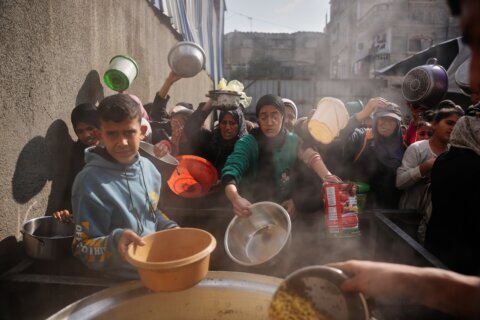The differences between the Amish and Inuit are as great as the distance that separates these two cultures. Yet these distinct cultures share one commonality — they both provide excellent examples of how modernization affects our health. Modernization refers to the changing from a rural and farming society to an urban and industrial society. By comparing the Inuit and Amish cultures, the effects of modernization (or resistance to modernization) on health become clear.
The Case of the Inuit
In a landmark series of studies, Roy Shephard and Andris Rode examined the effects of a rapidly changing environment on the Inuit people living in Igloolik, which is located in the northern remote Canadian territory of Nanavut. Ingloolik has a polar climate — for nine months of the year, the average temperature is below freezing.
Historically, the people of Igloolik lived a hunting and trapping lifestyle that required high levels of daily physical activity. However, in the later half of the 20 th century the Igloolik community went through a rapid period of acculturation to a sedentary lifestyle. In essence, their hunter-gatherer lifestyle quickly shifted to a more mechanized Western world lifestyle, as evidenced by the large increases in snowmobiles, boats, cars and all-terrain vehicles during this time.
Instead of walking through deep snow, the Inuit could now ride a snowmobile. As a result, their outdoor activities declined and were often replaced by sedentary indoor activities like watching television. Did this dramatic and rapid change in their environment affect their health? Yes! The Inuit’s levels of body fat quadrupled, and physical fitness levels plummeted between 1970 to 1990.;
The Case of the Old Order Amish
Another method to assess the impact of modernization on physical activity is to examine the Old Order Amish, because their lifestyle, in contrast to the Inuit, has not changed much in the last 150 years. The Old Order Amish believe in separation from the outside world and a simplistic lifestyle. In their clothing, lifestyle and religion, the Amish people emphasize humility, nonviolence and traditional values rather than advancement and technology. They don’t drive automobiles or use electrical appliances and other modern conveniences such as dishwashers and washing machines.
They have elected to keep most types of modern technology out of their lives, to live close to the land and to maintain strong family and community ties. Labor-intensive farming remains the main occupation, whereby the Amish men still till the soil with horses. The Amish people tend to either walk or use horse-drawn carriages for transportation. The Amish women do most of the childcare, cooking and cleaning. The children are educated in their own schools, and formal education ends after the eighth grade. In sharp contrast to the Inuit, the Old Order Amish have resisted modernization. From the standpoint of physical activity, the Amish people’s lifestyle might resemble that of rural residents in North America in the mid-to-late 1800s.
In a series of studies, David Bassett and his colleagues examined if resistance to modernization had any affect on the physical activity and health of Old Order Amish children and adults. They found that the Amish children and adults had a much higher level of physical activity and a lower rate of overweight and obesity compared to other youth and adults in the U.S. More specifically, obesity was rare in the Amish community. For example, only 1.4 percent of the Amish youth were obese, compared to about 8 percent of American youth at the time this study was conducted. As well, only 7 percent of Amish youth were overweight, compared with about 25 percent of American youth. For physical activity, the Amish children walked about 2 to 3 miles more per day than other U.S. children.
Of importance, the Amish youth had higher levels of physical activity than other U.S. children, despite less participation in competitive sports, no fitness facilities and no physical education classes. The Amish children accumulate steps in a variety of ways throughout the day. They walk to school regardless of the weather, and they perform activity-intense farm and house chores such as feeding and tending to farm animals, harvesting crops, sweeping, cleaning floors on their hands and knees, meal preparation and childcare. Despite the lack of formal physical education classes, the Amish schoolchildren are given two recesses and an hour lunch each school day, and most of this time is spent engaged in active play.
By examining these two distinct cultures, the effects of modernization on our health is obvious. We love our modern conveniences — but maybe they’re killing us. There’s a lot of truth, at least when it comes to our health, in the “good old days.”
More from U.S. News
How to Know if You’re Exercising Too Much
Debunking 5 Common Weight-Loss Myths
5 Extreme Diets You Shouldn’t Try
What Can We Learn About Health From the Amish and Inuit? originally appeared on usnews.com







